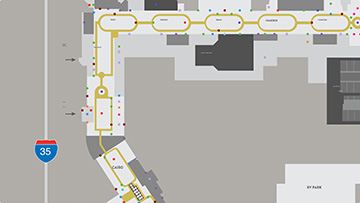Embarking on your first casino adventure can be as exciting as it is intense. Picture this, you step into the complex realm of playing casino blackjack, ready to take on the challenge of the dealer. The atmosphere is electric, the cards are in your favor, and the potential for a fantastic time is right at your fingertips.
But wait, you want to ensure you’re not just navigating the game but conquering it with finesse by learning how to play blackjack. That’s where this Blackjack Cheat Sheet comes in – your secret weapon for mastering the art of blackjack and turning your casino experience into an unforgettable journey.
Whether you’re a novice player looking for blackjack tips and gearing up for your first casino encounter, or someone looking to up their game, this casino blackjack cheat sheet is designed with you in mind. Get ready to unravel the mysteries of blackjack, confidently face the dealer and ensure every moment at the table is filled with excitement.
Welcome to the world of blackjack – where fun meets strategy, and the Blackjack Cheat Sheet is your ticket to building the knowledge and confidence to hit the blackjack tables.
What Is A Blackjack Strategy Cheat Sheet?
A blackjack strategy chart is a visual representation of the optimal decisions a player should make at the blackjack table based on their hand and the dealer’s upcard. It serves as a valuable reference guide to help players make statistically sound decisions that aim to reduce the house edge and maximize their chances of winning in the long run.
A blackjack cheat sheet typically consists of a grid, table or a list where the player’s hand value is matched with the dealer’s upcard. The intersections within the chart provide recommendations on whether to hit, stand, double down, split pairs or surrender, depending on the specific combination of cards.
Players can use the chart as a quick reference to learn during a game, helping them make strategic decisions in real-time. By following the recommendations on the chart, players can enhance their overall gameplay and make informed choices, contributing to a more enjoyable experience to get them ready and confident to hit the blackjack tables at the casino.
Blackjack 21 Cheat Sheet for Beginners
Surrenders:
What is a surrender in blackjack?
In the context of blackjack lingo, the term “surrender” refers to a playing option that allows a player to forfeit their hand and lose only half of their original bet rather than risking the entire amount. Not all blackjack variations or casinos offer the surrender option, so it’s essential to check the specific rules in place.
There Are Two Main Types of Surrender:
Early Surrender:
This option allows players to surrender before the dealer checks for blackjack. It’s a rarer variant and provides players with a bit more flexibility.
Late Surrender:
This is the more common type of surrender. It occurs after the dealer has checked for a blackjack but doesn’t have one. Players can then decide to surrender and lose half of their bet.
Blackjack Surrender Strategy
The decision to surrender is typically influenced by the player’s hand and the dealer’s upcard. It is often considered a strategic move in specific situations, such as when the player has a weak hand (like a hard 16) and the dealer has a strong upcard (like a 9, 10, or Ace). Surrendering in such situations may minimize losses.
It’s important to note that not all blackjack tables offer the surrender option, and even when it is available, players need to adhere to the specific rules of the game they are playing.
One of the strategic nuances in blackjack is the art of surrendering. Imagine facing a 16 against a dealer’s 9 through Ace – surrendering in such scenarios can be a wise move, offering a tactical advantage in specific situations.
Blackjack Surrender Cheat Sheet
- Surrender on 16 against dealer 9 through Ace.
- Surrender on 15 against dealer 10.
- In other cases, revert to hard totals for a solid game plan.
Splits:
In blackjack, “splits” refer to a player’s option to split a pair of cards with the same rank into two separate hands, each with its own bet. The player then plays each hand independently in the hope of improving the overall situation.
Blackjack Split Strategy:
- Pair Requirement: Splits can only be performed when a player is initially dealt a pair of cards with the same rank (e.g., two 8s, two 10s, etc.).
- Separate Bets: When a player decides to split, they must place an additional bet equal to their original wager on the second hand. Each hand is then treated as a separate entity with its own bet.
- Playing the Hands: After the split, the player plays each hand separately, deciding whether to hit, stand, double down, or surrender based on the individual circumstances of each hand.
- Possible Additional Splits: In some variations of blackjack, if a player is dealt another pair after splitting, they may have the option to split again. However, this option is often limited to a certain number of splits per round.
- Payouts: Winning a hand resulting from a split usually pays out at 1:1, and blackjack (an Ace and a 10-value card) after a split may be considered as a regular 21 rather than a blackjack.
Blackjack Split Cheat Sheet
The decision to split your cards can make or break a hand. While it’s common knowledge to always split aces, understanding when to split other pairs, such as 8’s or 7’s against specific dealer upcards, is crucial for optimizing your play.
- Always split aces for an advantageous start.
- Never split tens; their strength lies in unity.
- Pair of 9’s splits against dealer 2 through 9, except for 7; otherwise, stand confidently.
- Always split 8’s for a strong offensive move.
- Pair of 7’s splits against dealer 2 through 7; otherwise, opt for a strategic hit.
- Pair of 6’s splits against dealer 2 through 6; otherwise, hit.
- Pair of 5’s doubles against dealer 2 through 9; otherwise, hit.
- Pair of 4’s splits against dealer 5 and 6; otherwise, hit.
- Pair of 3’s splits against dealer 2 through 7; otherwise, hit.
- Pair of 2’s splits against dealer 2 through 7; otherwise, hit.
Soft Totals:
In blackjack, a “soft total” refers to a hand that contains an Ace valued as 11. The term “soft” is used because the hand can be more flexible due to the dual value of the Ace. This is in contrast to a “hard total,” where the Ace is valued as 1, and there is no flexibility.
Blackjack Soft Totals Strategy:
- Ace as 11: In a soft total, the Ace is counted as 11, providing the player with a more advantageous starting point. For example, an Ace and a 6 (A-6) make a soft 17.
- Flexibility: The main advantage of a soft total is the flexibility it offers. Since the Ace can be counted as 1 if needed without busting the hand, players have more options when deciding whether to hit, stand, or double down.
- Example: If a player has an Ace and a 7 (A-7), they have a soft 18. If they decide to hit and draw a 9, the hand becomes a hard 17 (A-7-9), as counting the Ace as 11 would result in a bust.
- Soft 17: A soft 17 is a common hand that players encounter. It consists of an Ace and a 6. Depending on the casino rules, the dealer may be required to hit or stand on soft 17.
Double Down: Players often choose to double down on soft totals, especially when the dealer has a weak upcard. This allows them to increase their bet and potentially improve their hand.
Soft Totals Cheat Sheet
- Soft 20 (A,9) always stands with confidence.
- Soft 19 (A,8) invites a double against dealer 6; otherwise, stand composedly.
- Soft 18 (A,7) doubles against dealer 2 through 6 and hits against 9 through Ace; otherwise, stand confidently.
- Soft 17 (A,6) doubles against dealer 3 through 6; otherwise, hit.
- Soft 16 (A,5) doubles against dealer 4 through 6; otherwise, hit.
- Soft 15 (A,4) doubles against dealer 4 through 6; otherwise, hit.
- Soft 14 (A,3) doubles against dealer 5 through 6; otherwise, hit.
- Soft 13 (A,2) doubles against dealer 5 through 6; otherwise, hit.
Hard Totals:
In blackjack, a “hard total” refers to a hand that does not contain an Ace or contains an Ace that must be valued as 1 to avoid busting. Unlike a soft total, where an Ace can be counted as either 1 or 11, in a hard total, the Ace has a fixed value of 1.
Blackjack Hard Totals Strategy:
- No Aces Valued as 11: In a hard total, there is no Ace counted as 11. The hand’s total is determined by the sum of the individual card values.
- Example: If a player has a 10 and a 7, the total is a hard 17. If they draw a 5 on the next card, the total becomes a hard 22 (10 + 7 + 5), which is a bust because an Ace cannot be counted as 11 in this situation.
- Rigid Hand: Hard totals are considered more rigid compared to soft totals because there is less flexibility in terms of the total value of the hand.
- Strategies: Basic strategy for playing hard totals involves decisions based on the player’s total and the dealer’s upcard. For example, players typically hit hard totals below 17 and stand on hard totals of 17 or higher, depending on the dealer’s card.
- Busting: Since there is no flexibility in the value of Aces in a hard total, there is a higher risk of busting (exceeding 21) when taking additional cards.
Hard Totals Cheat Sheet
The strategy behind hard totals involves knowing when to stand on 17 and above, when to hit on 16 against dealer 2 through 6, and other tactical moves that can turn the tide in your favor.
- 17 and up always stands with determination.
- 16 stands against dealer 2 through 6; otherwise, hit assertively.
- 15 stands against dealer 2 through 6; otherwise, hit confidently.
- 14 stands against dealer 2 through 6; otherwise, hit decisively.
- 13 stands against dealer 2 through 6; otherwise, hit boldly.
- 12 stands against dealer 4 through 6; otherwise, hit strategically.
- 11 always doubles down, exuding confidence.
- 10 doubles against dealer 2 through 9; otherwise, hit assertively.
- 9 doubles against dealer 3 through 6; otherwise, hit with purpose.
- 8 always hits, a measured move in the grand strategy.
Key Strategy Advice and Takeaways:
Having a blackjack cheat sheet to learn and study from can significantly impact your gameplay. From standing on 17 and above to doubling down on 11 and wisely splitting 8s and Aces, incorporating these strategies and learning from the blackjack cheat sheet can lead to more enjoyable time. Now let’s explore some fundamental takeaways that help empower you to make strategic decisions from our blackjack 21 cheat sheet that you can take to your next blackjack table experience.
Stand on 17+:
- The cardinal rule in blackjack is to stand on a hard 17 or higher. Even if the dealer flaunts an Ace or a formidable 10, holding your ground is the prudent move. The limited number of beneficial cards makes standing the strategic choice in these scenarios.
Double Down on 11:
- Embrace the power of doubling down on a hard 11, forged from your initial two cards. This robust starting hand is one of the best in blackjack, allowing you to capitalize on the situation and maximize your wins in the long run.
Split 8s and Aces:
Optimal gameplay dictates splitting a pair of eights or a pair of aces at the beginning, regardless of the dealer’s visible cards. While it demands an additional bet, this strategic move lays the groundwork for a more advantageous position. A similar approach is advisable with nines, although standing is preferable if the dealer reveals a 7, 10, or Ace.
Never Split 10s:
- Adhering to blackjack basic strategy, always stand when dealt a pair of 10s as your starting hand. Holding a total of 20 provides an excellent chance of winning the hand.
Hit on Ace-7 against Dealer’s 9, 10, or Ace:
- Despite Ace-7 being a decent starting hand, opt for a hit if the dealer’s upcard surpasses 8. This cautious move guards against the likelihood of the dealer forming a stronger hand than 18.
Only Stand with 12 on Dealer’s 4, 5, or 6:
- Strategic decisions unfold in specific scenarios, such as standing when the dealer reveals a 4, 5, or 6. In other cases, hitting is the correct move, anticipating that the dealer’s hidden card may result in a hand stronger than 12.
Stand with 13, 14, 15, or 16 on Dealer’s 2 through 6:
- These hands frequently emerge in the game of 21, demanding a nuanced approach. Stand if the dealer shows 2, 3, 4, 5, or 6. If the dealer’s upcard is higher, opt for a hit, aiming to enhance your hand. When surrender is an option, wisely employ it on 16 against 9, 10, or Ace for strategic advantage.
Take Your New Skills To WinStar Casino
Understanding the nuances of blackjack, from strategic moves like surrendering and splitting to navigating the dynamics of soft and hard totals, empowers players to make informed decisions at the gaming table. These elements add layers of complexity and skill to the game. For those seeking an exciting blackjack experience, WinStar welcomes you with its diverse gaming options. Explore the world of possibilities and plan your next gaming adventure by visiting WinStar World Casino and Resort, where excitement meets entertainment.






















